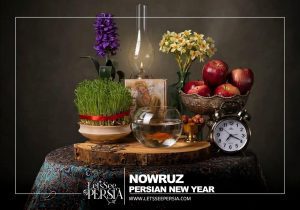
Yalda Night in Iran
Tourist information about Yalda Night
Yalda Night is an Iran travel blog that introduces all Iranian traditions and culture on Yalda Night. Here, you can find all the information about Yalda Night and its culture in Iran.
UNESCO describes Yalda in terms of culture, friendship, hospitality, cultural diversity, and peaceful coexistence.
Shab-e Yalda is celebrated on the last day of Azar (the last month of fall) before the start of Dey (the first month of winter).
Families in Iran and Afghanistan observe this tradition on the last night of autumn by gathering at their elders’ homes and feasting on symbolic foods and items, including red fruits like pomegranates, watermelons, beetroots, jujubes, and grapes, which stand for the sun and its warmth, a lamp, which symbolizes light, and water, which symbolizes cleanliness.
New in-laws, brides, and children receive gifts and enjoy poetry readings, games, and musical performances.
Yalda Night, also called Shab-e Yalda, is a celebration deeply rooted in the cultures of Iran and Afghanistan. UNESCO has recognized it as an important way to promote culture, friendship, hospitality, cultural diversity, and peaceful coexistence. This ancient festival takes place on the longest and darkest night of the year. It celebrates the victory of light over darkness because it marks the start of longer days after the winter solstice.
Yalda is more than just a celebration of the changing of the seasons. It shows how strong the human spirit is and how important unity and hope are in our culture. During Yalda, stories about bravery, endurance, and how light will eventually win over darkness are often told. In this way, the festival is a time to have fun, think about the past, and be hopeful about the future.
Yalda Night (Shab-e-Chelleh) was included to UNESCO‘s Representative List of Intangible Cultural Heritage.
What do Iranians Do on Yalda Night?
Families in Iran and Afghanistan continue the tradition by getting together on this fun night to show respect and love for each other, especially at the homes of the oldest relatives. It’s a time for telling stories, getting to know each other across generations, and being thankful for the wisdom of the old. Most of the time, the atmosphere is warm and friendly, and the homes are beautifully decorated to make people feel like they’re celebrating.
One of the most important parts of Yalda Night is the sharing of symbolic foods that are thought to bring health, vitality, and wealth. Red fruits, like watermelons and pomegranates, represent the bright colors of dawn and the hope that life will come back to the world. People also eat beets, jujubes, and grapes, each of which has its meaning and adds to the palette of colors at the Yalda table. People like these fruits not only because they taste good, but also because they have a deeper meaning that has to do with the seasons and the sun.
It’s a Big Party with Snacks and Fruits
The rituals that Yalda performs are not only a way to showcase her culture but also an important part of Persian social life. When the days are short and the nights are long and cold, the longest night of the year turns into a small gathering full of warmth and laughter against the harsh winter background.
The main traditions of Yalda Night haven’t changed, but there are differences between communities and regions. Here are some things that might happen on a regular Yalda Night:
-Apples, oranges, and persimmons are just a few of the fruits and nuts that are often added to the Yalda spread along with the red fruits. A lot of people also eat mixed nuts, like pistachios, almonds, and walnuts, which are a sign of health and wealth.
-Different kinds of sweet pastries and candies are served, such as “Bastani Sonnati” (traditional Persian ice cream), “Faloodeh” (a cold dessert made from thin vermicelli noodles), and “Gaz” (Persian nougat). These are meant to balance out the sourness of the seasonal fruits.
When people celebrate Yalda Night, different kinds of nuts, called “Ajil,” play a big part and are deeply connected to the event. On Yalda, people eat Ajil, which is similar to the exchange of sweets during Halloween or the gifting of chocolate at Easter in Western traditions. Each kind of nut in the Ajil has its meaning and adds to the night’s celebration.
Gift-giving is another way that generosity and happiness are shown. New in-laws, brides, and children are given extra attention, which builds community support and love.
For a practice called Fāl-e Hāfez, people often use the Divan of Hafez (Book), a collection of poems, to help them figure out what they need to do. People make a wish or think about a question in their hearts, and then a poem is picked at random from the book. This poem is believed to tell them what will happen or help them.
People play games and listen to music, which includes both traditional and modern tunes that add to the friendly atmosphere.
The experience of visiting traditional parties of different nationalities can be one of the most beautiful and memorable travel experiences. If your trip to Iran coincides with Yalda night and you want to experience this festival up close, contact our tour operators to add this beautiful festival to your itinerary.
- Click Here to Read More Iran Travel Blog


